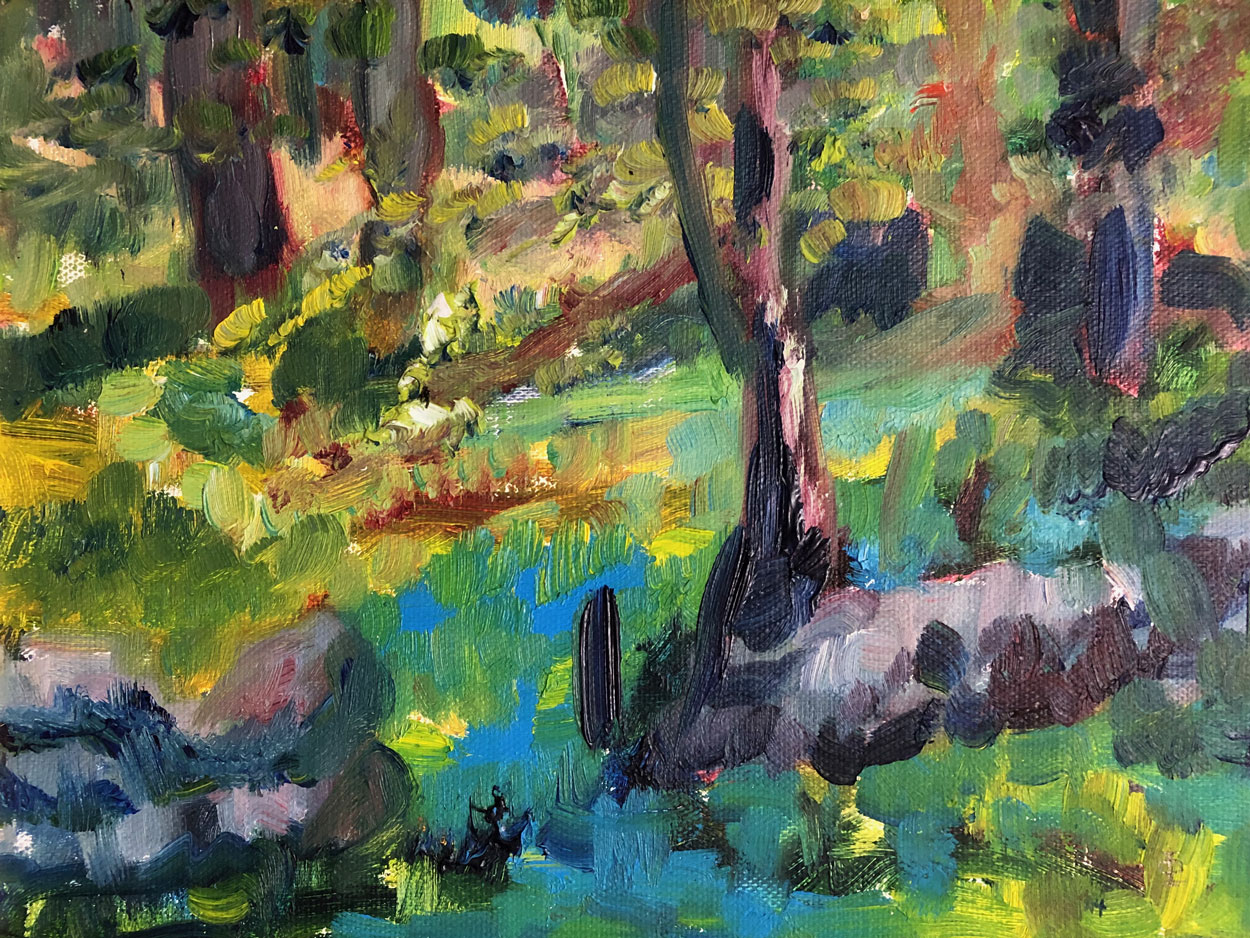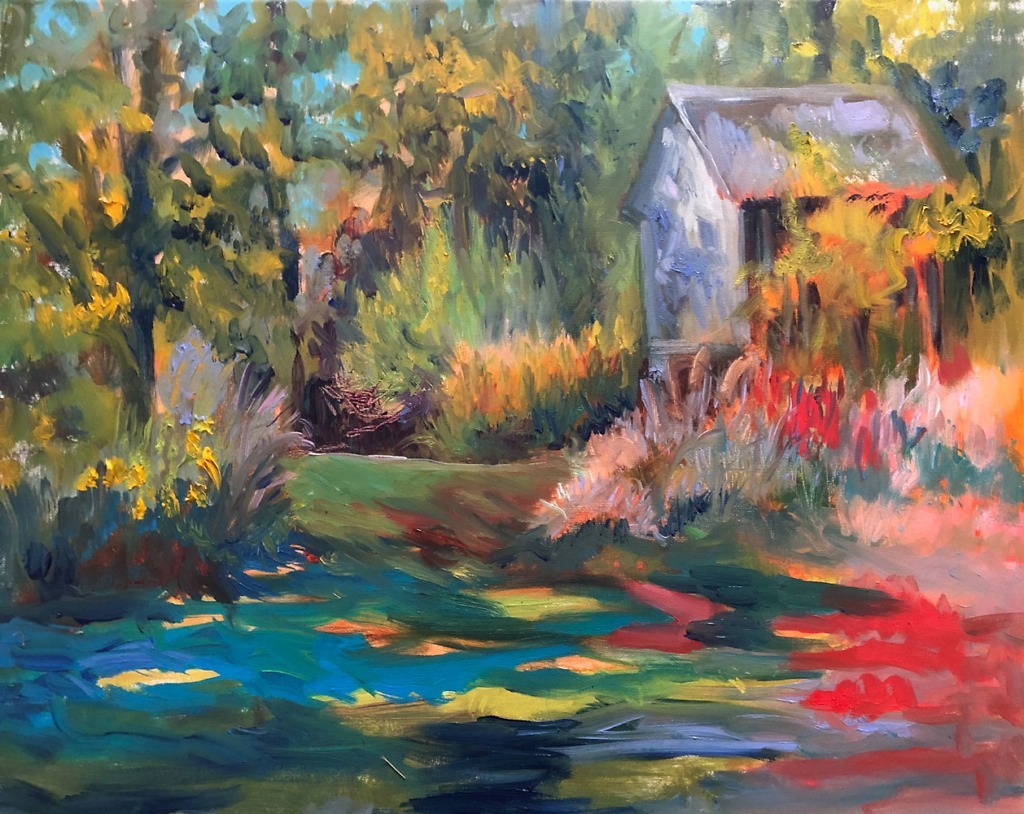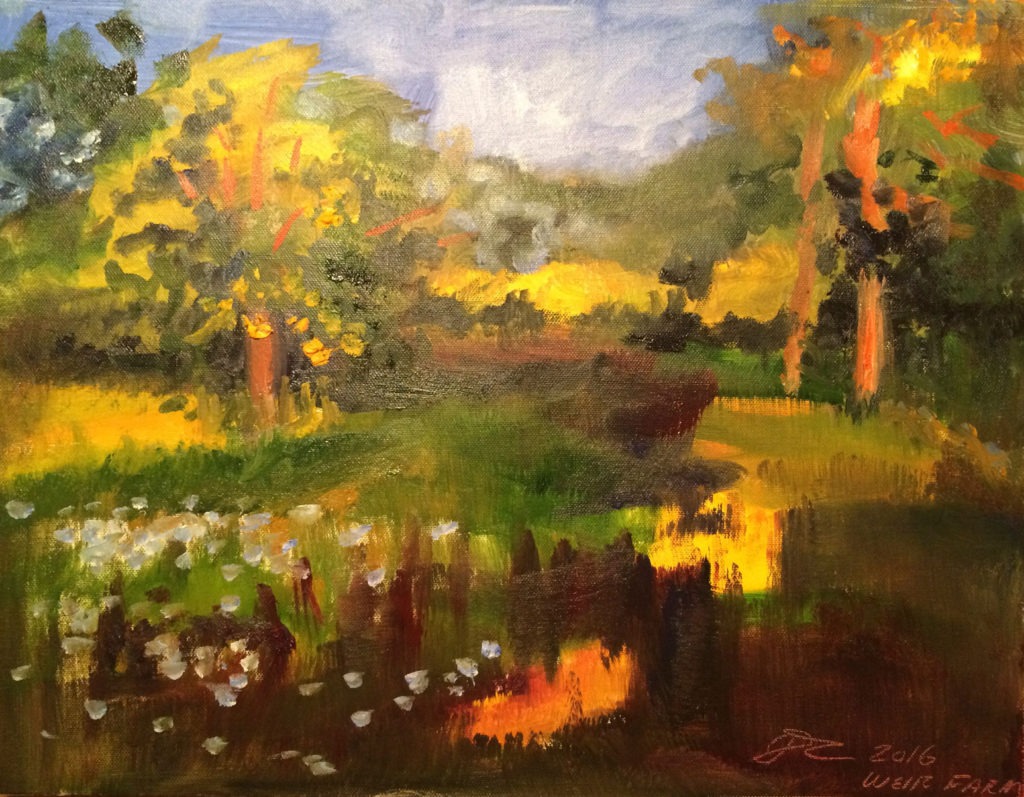America the Beautiful
Weir Farm National Historic Site
Weir Farm National Historic Site straddles Ridgefield and Wilton, Connecticut. It commemorates the life and work of American impressionist painter J. Alden Weir and other artists who stayed at the site or lived there, including Childe Hassam, Albert Pinkham Ryder, John Singer Sargent, and John Twachtman.
I created this painting, Summer’s Day at Weir Farm, onsite, en plein air, alongside one of my best friends and fellow painter. Much of the time the paintings that I do on location need to be touched up in the studio or are relegated to serve as studies. Occasionally, as with this painting, I’m able to get it just right. This painting was exhibited in the Weir Farm National Historic Site in 2020 and received an honorable mention from U.S. Department of the Interior, National Park Service.
To purchase a print please visit the Art Shop. To purchase one of these paintings please contact Jill to discuss purchase details.

America the Beautiful
In a brief essay that appeared ca. 1925, poet Katharine Lee Bates described her inspiration for writing “America the Beautiful,” the poem that would evolve into one of the nation’s best-loved patriotic songs. Bates was a professor at Wellesley and had traveled west to teach a summer course in Colorado Springs in 1893. Bates and the other professors decided to “celebrate the close of the session by a merry expedition to the top of Pike’s Peak.” They made the ascent by prairie wagon. At the top, Bates later wrote, she was inspired by “the sea-like expanse of fertile country . . . under those ample skies,” and “the opening lines of the hymn floated into my mind.” Those opening lines—“O beautiful for spacious skies, / For amber waves of grain, / For purple mountain majesties / Above the fruited plain!” would become the lyrics of America’s other anthem.
Bates finished writing “America the Beautiful” before leaving Colorado Springs but didn’t think of publishing it until two years later. The poem was first printed in a weekly newspaper, The Congregationalist, on July 4, 1895. Bates’s patriotic words were soon set to music, most popularly to composer S. A. Ward’s “Materna,” the tune to which we sing it today. Celebrating “country loved” and the “patriot dream,” the song resonated with Americans from all walks of life and became enormously popular. Within twenty years, Bates (after revising some of the lyrics in 1904) had “given hundreds, perhaps thousands, of free permissions” for “America the Beautiful” to appear “in church hymnals and Sunday School song books of nearly all the denominations; . . . in a large number of regularly published song books, poetry readers, civic readers, patriotic readers . . . in manuals of hymns and prayers, and anthologies of patriotic prose and poetry . . . and in countless periodicals.”
While Bates was initially surprised by the poem’s success, she later reflected that its enduring “hold as it has upon our people, is clearly due to the fact that Americans are at heart idealists, with a fundamental faith in human brotherhood.”
AMERICA THE BEAUTIFUL
O beautiful for spacious skies,
For amber waves of grain,
For purple mountain majesties
Above the fruited plain!
America! America!
God shed His grace on thee
And crown thy good with brotherhood
From sea to shining sea!

